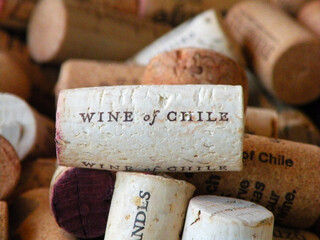This is a story about how two communes in Bordeaux emerged from relative anonymity to become the celebrated sites of world famous wines.
Prior to 1987, the communes of Pessac and Léognan were simply parts of the notable Graves district, south of the city of Bordeaux. Pessac and Léognan are place names that follow the name of a well known chateaux, and rarely stand on their own.
The celebrated Graves chateaux Haut-Brion and La Mission Haut-Brion are in Pessac. There are 10 cru classé wines in Léognan, including such celebrated properties as Ch. Domaine de Chevalier and Ch. de Fieuzal.
What prompted the name change was a claim that one wine was better than another one. In 1984, a sizeable group of growers and vintners in the northern Graves claimed that their wines were better than those in the south. Pessac is in the northern Graves and Léognan is near the southern edge of the Graves district.
To settle the disagreement, the Institut National des Appellations d'Origine (INAO) decreed that the Graves district would henceforth be divided into two districts. In total, there are 23 wines from 16 chateaux.
Unfortunately, while the decree raised the recognition of Pessac and Léognan, it lowered the status of the historic name of Graves. Perhaps the Graves' greatest moment was when the framers of the 1855 Classification of the Médoc included Chateau Haut-Brion Pessac as the only property in the Graves to be included with four Médoc chateaux as a Premier Cru or First Growth.
In 1973, the classification was reclassified, elevating Ch. Mouton-Rothschild to Premier Growth, to date, the only property to ever move up. Ch. Haut-Brion is the only Graves property listed in the 1855 Classification.
There is an argument to be made that other Graves properties should have been included in the 1855 Classification, but in 1953 the INAO formulated an official Graves classification, including white wines, that was revised in 1959.
The 1959 classification lists 23 chateaux, six of which are from Léognan and two from Pessac. And since the Graves is known for white wines as well as red, there are nine cru classes for white wines from noted properties such as Ch. Bouscaut, Ch. Carbonnieux and Ch. Olivier.
Most Pessac-Léognan chateaux that make a white wine, use mainly Sauvignon Blanc and Semillon grapes, while some chateaux also blend in small percentages of Sauvignon Gris and/or Muscadelle. This Bordeaux style of sauvignon is drier and more mineral than the tropical fruit styles from California and New Zealand.
Pessac-Léognan red wines follow the standard recipe of five varieties: Cabernet Sauvignon, Cabernet Franc, Merlot, Malbec and Petit Verdot. Over the years, the fashion has been to use only the first three varieties, with a percentage or two of Petit Verdot and Malbec, if added at all.
These red wines are seamless, with no single variety dominating the blend. In fact, it's a tribute to the art of blending that five individual wines form one unified wine with a signature note of dark cherry, subtle herbs and aromatic spices.
The cost of a Pessac-Léognan wine, red or white, averages $150, although the more valued chateaux are considerably higher: Ch. Haut-Brion, $650; Ch. La Mission Haut-Brion, $400. Domaine de Chevalier is a relative bargain at $90.
French laws relating to wine production and labeling are strict and resistant to change. More is the reason then that the collaboration between the INAO and the French government to classify the wines of Pessac and Léognan is important.
Next post: AI and the Future of Wine Writing
Leave a comment at boydvino707@gmail.com








